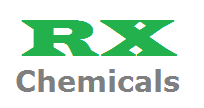
POLYETHYLENE GLYCOL 6000
Polyethylene glycols (PEGs) are condensation polymers of ethylene oxide. Low molecular weight compounds up to 700 are colorless, odorless viscous liquids while polymerized compounds with higher molecular weight than 1,000 are wax like solids
The reason for for using PEGs with large molecular weight is that smaller PEGs can diffuse through the cell wall and are even taken up by plant cells and distributed through the plant, which may influence the results. larger than 6,000 (PEG 6000) are inert, non-ionic and cell impermeable. to simulate osmotic stress.
Polyethylene glycol, referred to as PEG, is used as an inactive ingredient in the pharmaceutical industry as a solvent, plasticizer, surfactant, ointments and suppository base, and tablet and capsule lubricant. ... PEG is also available as a bowel prep for colonoscopy procedures and as a laxative
The addition of PEG to a protein solution increases the chemical potential of the protein. Precipitation of the protein occurs when its chemical potential exceeds the level of a saturated solution.
The reason for for using PEGs with large molecular weight is that smaller PEGs can diffuse through the cell wall and are even taken up by plant cells and distributed through the plant, which may influence the results. larger than 6,000 (PEG 6000) are inert, non-ionic and cell impermeable. to simulate osmotic stress.
| Color of Solution, 5g/50ml of Water Slightly | Hazy |
| Viscosity @98.9˚C | 250-390 Cst |
| pH, 5% Solution in Water | 4.5-7.5 |
| Residue on ignition Max | 0.1 %wt |
| Assay (Average Molecular Weight) | 5400-6600 g/mol |
| Heavy metals Max | 5 ppm |
| Ethylene Oxide & 1,4-Dioxane Max. | 10 |




